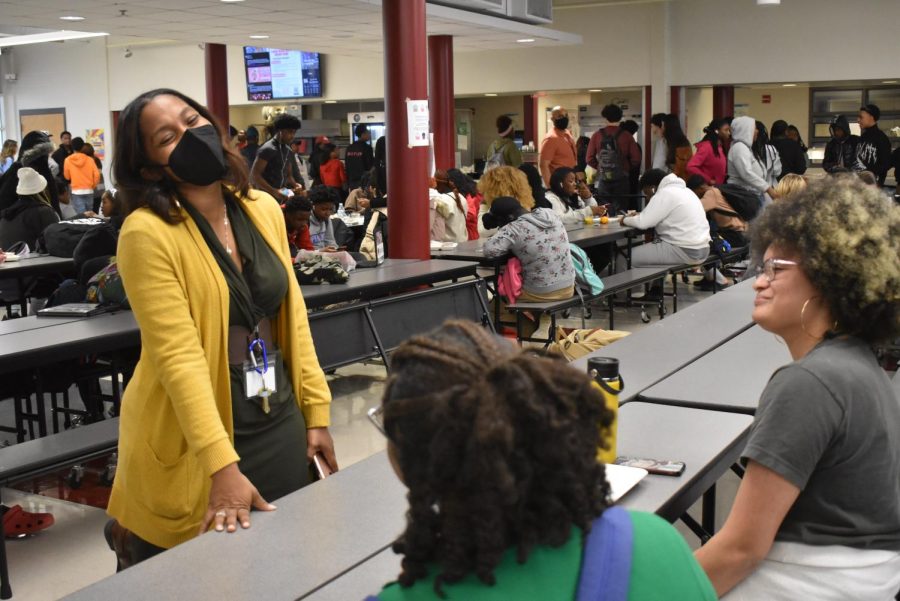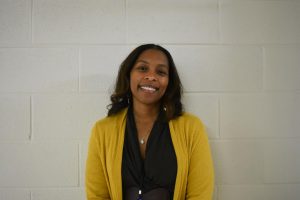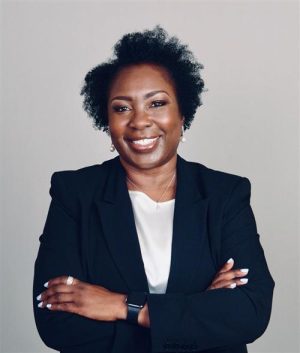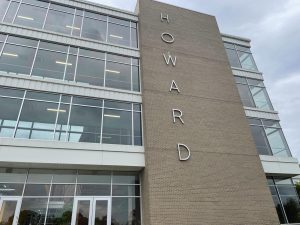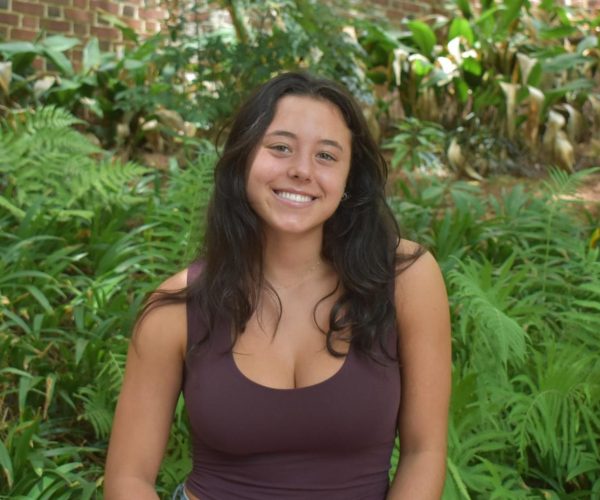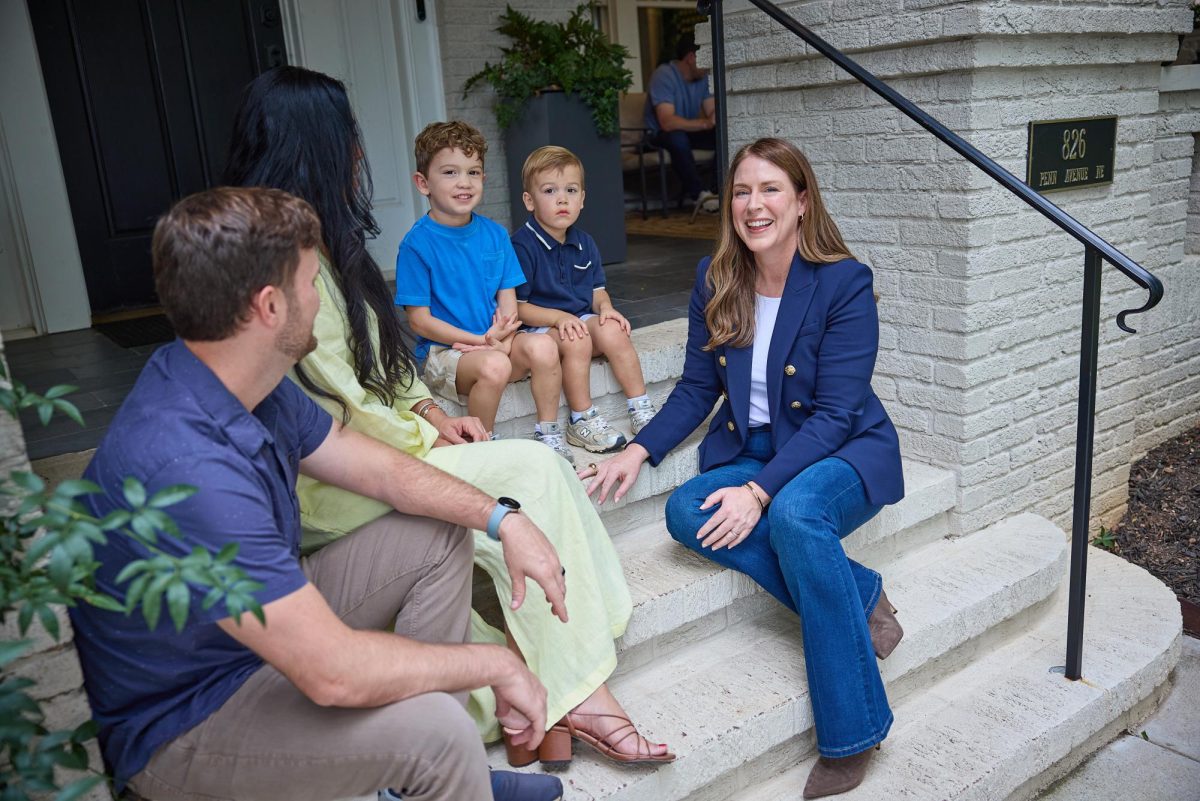New principal Hollis joins Howard faculty
Former Assistant Principal Tekeshia Hollis began work as principal for Howard Middle School. Before leaving, she enjoyed walking around during lunch periods to talk to students in the cafeteria. Students Ari Dumas and Selah Ramos, seen in this picture, are laughing with Hollis.
January 25, 2023
After months of change and uncertainty following former Howard Principal Janet McDowell’s departure, a new principal will be overseeing Howard Middle School: Tekeshia Hollis.
Hollis served as Midtown’s assistant principal for eight years, and began working at Howard on Jan. 17. While Hollis is excited for her new beginning at Howard, she is nervous for the unfamiliar responsibilities the position will require.
“There is a gap in responsibilities between the two roles, and a different level of responsibility,” Hollis said. “Everything starts and stops with you when you are principal. As an assistant principal, you understand your role and you are okay with not being the person that everyone seeks after.”
Although Hollis believes she is prepared for the position in terms of her experience, she recognizes the vast responsibilities of the job.
“I am the type of person that always has a growth mindset,” Hollis said. “I am always aiming to be better everyday, and so while I understand the role, and actually have done the role before, there is a sense of humbleness that comes with the role to be ultimately responsible for 1200 people and seriousness that I don’t take lightly.”
Hollis says she will miss the familiarity and sense of community from her job at Midtown, but she is confident in her ability to build the same relationships with students and staff at Howard.
“You come to see people [at Midtown] kind of like a family,” Hollis said. “I’ve been with them for so long; I’ll miss those things. Here [at Midtown] I can say I have multiple best friends.”
Despite the change, Hollis is excited for the adventure that her future at Howard bestows.
“There are a lot of opportunities to shape what David T. Howard Middle School’s legacy will be, while still incorporating the legacy and heritage and history from Howard High School, and honoring that,” Hollis said.
Hollis recognizes that Howard hasn’t been given the chance to form their own distinction as a school, primarily due to the pandemic, and she looks forward to establishing that character.
“Midtown, as its own entity, has its own personality,” Hollis said. “Being that Howard opened during the pandemic, and last year being somewhat of a restricted year, this is like the first year that it’s been a full school and it’s been open. So right now, [Howard] is in that stage of empathy where they are trying to figure out their personality.”
Howard parent Kate Silvis hopes that Hollis will spend time getting to know the Howard community and school.
“Hopefully [Hollis] will spend time observing the teachers and students and talking to them, and hearing about what they think are the things that need work at first,” Silvis said. “Then I’m sure she has her own expertise to bring to the situation that, I think, would be best used after she watches Howard staff and students.”
Hollis wants to give Howard the opportunity to develop its own culture that she will then adapt to.
“I think it’s more about observing and listening than saying, ‘this is what it’s going to be,’” Hollis said. “Most of the building is still white walls, sterile—- I think it’s time to add life into the walls and an institution that [the Howard community] is excited to go to.”
As Hollis is currently in her first few weeks officially working at Howard, eighth grade student Lily Carter expresses how she already notices positive change.
“When we had our previous temporary principals, there was chaos,” Carter said. “There were new rules every time there was a new principal, where now, it feels permanent and like we have a certain way of doing things.”
Hollis recognized she will need to adjust to the different ages of the students that she will now be around and how to fit their needs as opposed to those of older students she is accustomed to working with.
“[Howard students] are just at a different developmental stage where they are still trying to explore and find themselves,” Hollis said. “Giving [the students] space to do that while still guiding them and having structure is a delicate balance. It’s an interesting place to negotiate versus in high school; there’s a different focus.”
Carter felt that previously, there were strict rules where more freedom should have been put in place.
“Especially since I’m an eighth grader, I feel like we should have more independence in what we’re able to do,” Carter said. “There should be a good balance between setting rules that the kids should follow, but also being able to connect with the kids and letting them do some of what they want.”
Silvis also hopes Hollis will understand the different levels of maturation that middle schoolers have.
“I would hope that a middle school principal would have an understanding of the developmental stages of sixth, seventh and eighth graders because sixth graders and eighth graders are very different developmentally, so their needs are very different,” Silvis said.
One of Hollis’ focuses in creating an amiable environment is making sure the students feel comfortable expressing who they are while exploring what makes them unique.
“Right now is more about welcoming the differences and having an 11-year-old know that it’s cool to be yourself,” Hollis said. “Developmentally, you may not know that as middle schoolers because you’re trying to get out from under your parents’ wing from elementary school a bit, but you haven’t quite found your footing that you have in high school.”
Teachers and parents of the Howard community look forward to the change in leadership.
“I am very optimistic,” said parent Susan Weatherly. “I am happy to see that they chose someone who was already in APS and who knows the families that come through Howard.”
Hollis says she can only work to be inclusive of her thoughts while being conscious of how her decisions will affect others.
“I don’t know my predecessor, and I’d like to think that there was a lot of thought in the decisions that were made because I like to presume the positive,” Hollis said. “When a decision is made, I try to give a rationale behind it, and I try not to require anything of someone that I wouldn’t do myself.”
Weatherly said she felt the biggest disappointment prior to Hollis’ arrival into the school was the teacher turnover.
“Teacher turnover is going to happen anyway,” Weatherly said. “But [parents] would meet the teachers on a meet-and-greet night only to find out that they’re leaving to take another job in direct connection to the principal that they had at the time. This is something that the students suffer from.”
Hollis is an advocate for effective communication between staff, students and parents while ensuring that her decisions remain flexible to fit the needs of her students and teachers. She believes this to be key in ensuring Howard’s success.
“People will feel more comfortable with your decision if they know the ‘why,’” Hollis said. “You have to be willing to discuss your decisions with students, parents, teachers, and help people understand that generally no decision made in a school is punitive. If they think that, they probably don’t understand the ‘why.’”
Weatherly possesses a similar view when it comes to the level of communication that she believes a principal should have.
“I just really hope that [Hollis] will be more open to the parents,” Weatherly said. “Because [Hollis] is already in APS and knows that the parents like to be more involved, I hope she brings that sense of community to Howard.”
Considering herself as an inquisitive person, Hollis always looks for new opportunities to take on and challenges to overcome. She sees taking on this position as a new opportunity for growth, not just for herself, but for Howard.
“When you’re always eager to grow, you are constantly looking for new experiences and to encounter new challenges,” Hollis said. “Listening to colleagues and mentors around me, it was time to embark upon a new challenge.”

